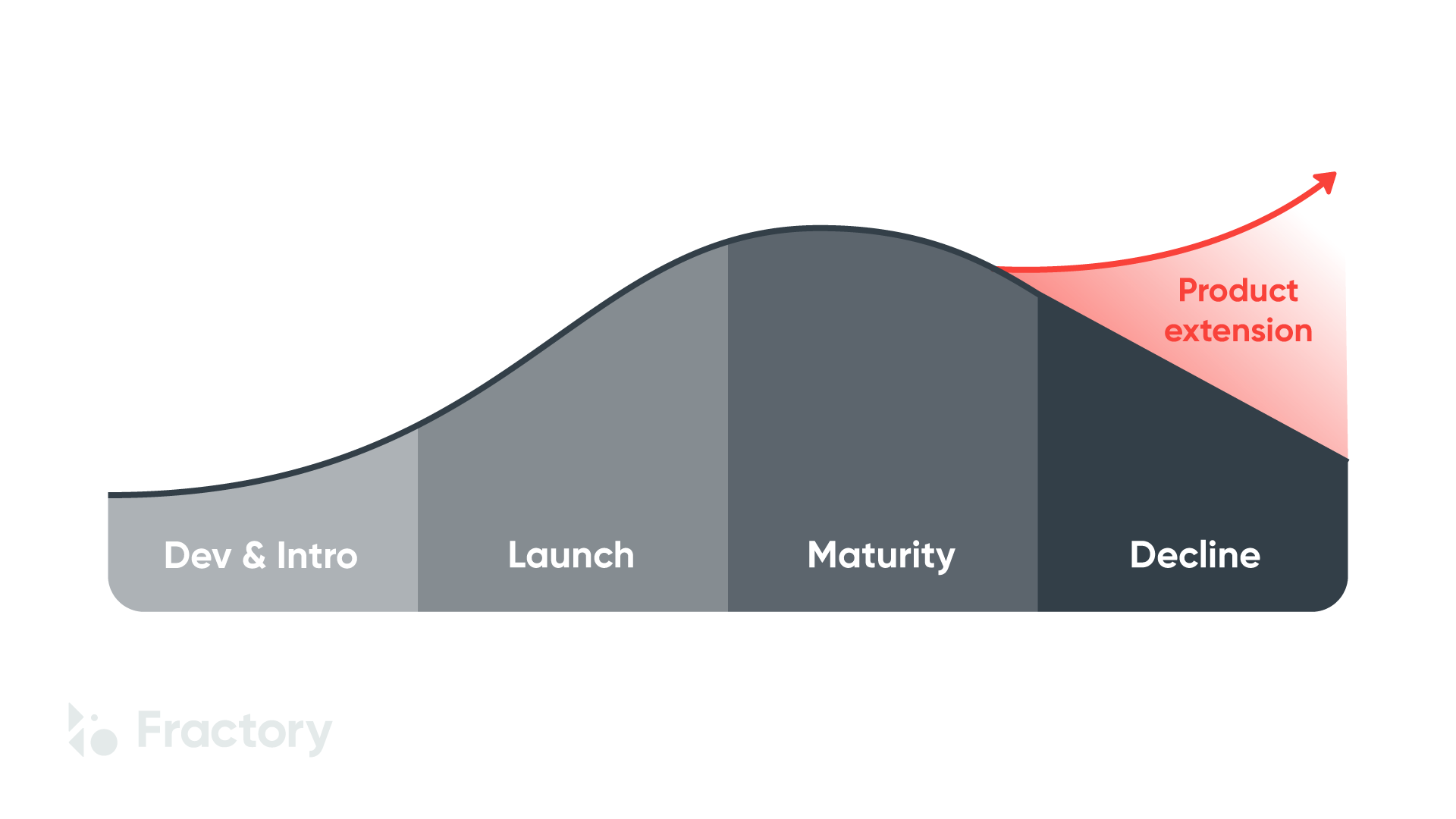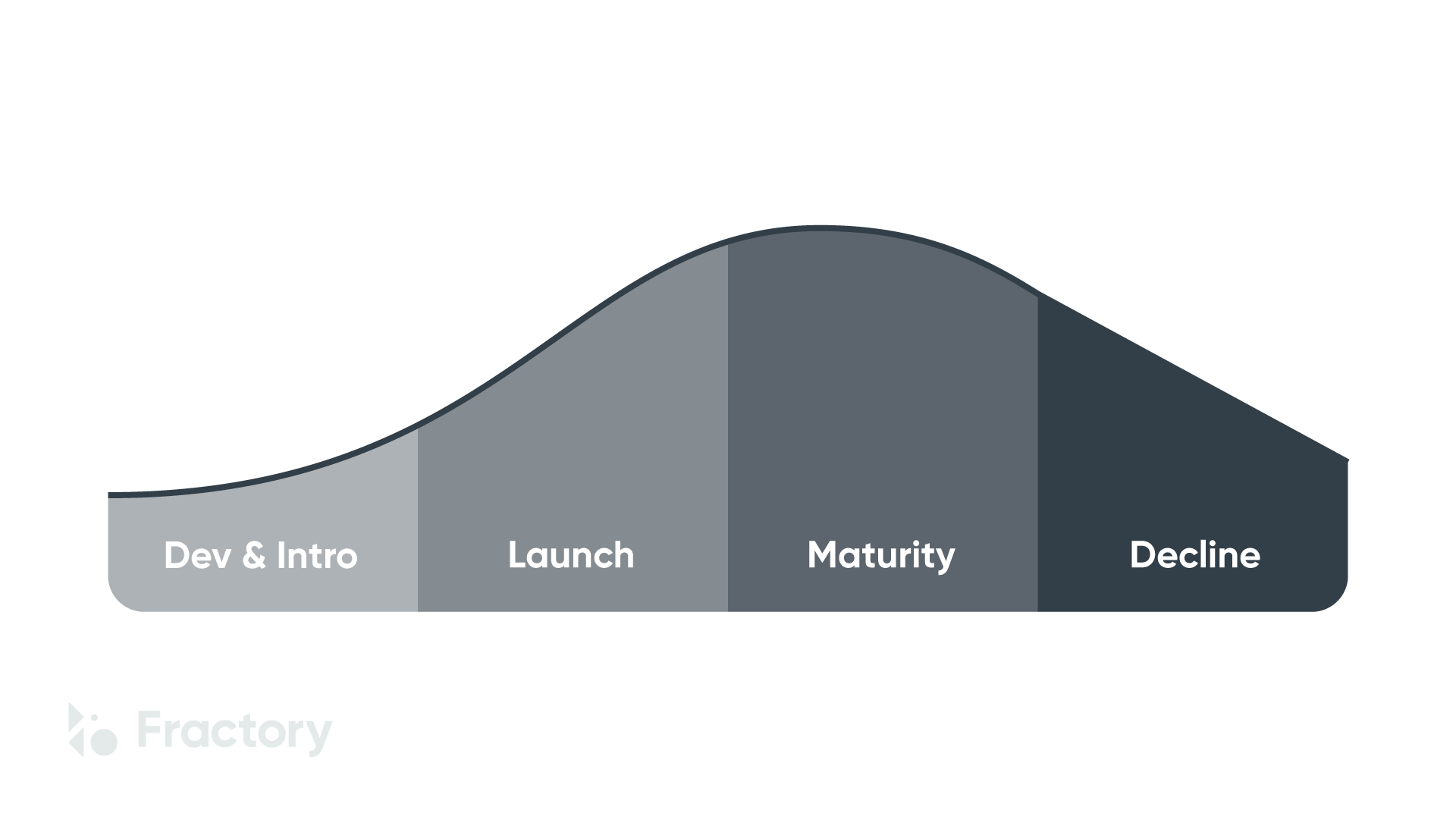Why do some products stay evergreen and others fade into the void? How do we know whether to reinvest in a product or introduce a new one? What are our options when the product seems to be losing market share with every passing day?
The product life cycle model can help us answer these questions and many more. Smart entrepreneurs have relied on it for decades to devise efficient marketing and sales strategies that generate the maximum revenue.
It has far-reaching implications as every single product goes through the same four phases mentioned in this model. A careful review of the model would thus benefit any product.
This article will give you a deeper understanding of what this model is and help you answer all the above questions with clarity. Make sure you read until the end to take full advantage of it.
- Product lifecycle maps out the entire journey of a product from the cradle to the grave, i.e. from its development to when the product is finally withdrawn from the market.
- Product lifecycle has four stages: development and introduction, growth, maturity and decline.
- The time to advance through the product lifecycle stages varies depending on the product and the industry.
- A successful product execution leads to market growth. This reduces costs and increases profits until the product reaches the decline stage.
- By thoroughly understanding product life cycles, we can avoid/delay the decline stage and stretch the market maturity stage for products, thereby increasing profitability.
- The maturity phase can be extended by improving the features of the current product or introducing a successor. Software products and services (SaaS) are a good example of the first strategy.
- At every stage, it is important to keep an eye out for customer feedback to maintain the relevancy and profitability of the product throughout the different stages.
What Is Product Life Cycle?
The product life cycle is a powerful administrative tool to understand the different phases that a product goes through. It maps a product’s journey from its launch until its discontinuation.
The tool has wide-reaching implications in marketing and sales but it can also aid in the design and decision-making process for the product.
The original product life cycle had five phases: development, growth, maturity, saturation and decline. It was developed by Raymond Vernon in 1966.
Over the years, the saturation stage was discarded and some added a different fifth stage known as the introduction stage.
But in today’s modern world, the development and introduction stages are highly interdependent as it is possible to get real-time feedback and bring effective changes in both of them.
Product Life Cycle Stages
In this article, we shall combine the first two stages (development and introduction) and make our product life cycle a four-stage process. It will then consist of the following four stages:
-
Development and introduction stage
-
Growth stage
-
Maturity stage
-
Decline stage
Development and Introduction Stage
The development stage is where the product life cycle starts. Before this stage, we have already identified a market for the product and ensured that the production is feasible.
For innovative products, a market may not be presently available but we know there is potential. It is prudent to start developing the product after the market studies.
High costs are involved in this stage as there is very little or no revenue and a lot more costs related to the development and introduction of the product.
The product may struggle with brand recognition. As a result, we need very specific marketing and advertising strategies.
This is especially true if the product is innovative or has new features that are not currently available in the market. Reaching out to influential personalities in your product’s ecosystem is one way to boost product awareness.
In addition to the above costs, you may find it difficult to find a supplier who is willing to stock your product during this stage.
You may also need to extend a credit line to the willing suppliers/retailers which is an additional cost as no revenue is generated until a sale takes place.
Some great sales strategies to succeed in the market introduction stage are:
-
Free trials/samples
-
Moneyback guarantee
-
Discounts for early buyers
For the marketing strategy during the introduction phase, the management may choose from one of the following options:
-
Rapid skimming (high price, high-level promotion)
-
Slow skimming (high price, low-level promotion)
-
Rapid penetration (low price, high-level promotion)
-
Slow penetration (low price, low-level promotion)
The choice depends upon factors such as the type of product, industry and existing competition.
Examples of products in the development and introduction stage
Some of the most popular products in the development and introduction phase today are:
-
Self-driving cars
-
Artificial intelligence applications
-
Smart glasses
-
Foldable and rollable smartphones and TVs
- Personal account manager
- Quality assurance
- Payment terms for companies
- On-time delivery by Fractory
Growth Stage
We enter this stage after successfully introducing the product to the target market.
If the product is appealing, mass-scale adoption begins. The adoption may be slow at the start but as compounding takes over, the sales volume starts increasing fast during the growth phase.
More and more people sign up for the product/service as early buyers and promotional offers start bringing in more traffic. More suppliers are willing to stock the product and ready to pay cash as the demand increases.
The management may take the step to approach bigger supermarkets besides small retailers. It may also strive to enter new markets and transition from a niche to a more diverse group of buyers.
The goal is to have as much market penetration as possible to reach full sales potential. Collecting customer feedback and implementing it is crucial to further improve the product and meet this goal.
The growth stage is also the stage where competitors will usually enter the market. This is because, many times, companies wait for a market to be established to bypass some of the costs associated with the introduction phase.
But once your product creates that market, competitors will almost always come up with products that are either a direct copy or very similar to your offering with some added features.
Examples of products in the growth stage
Some of the most relatable examples of products in the growth stage are as follows:
-
Electric vehicles
-
Cloud storage
-
Online education
-
Smartwatches
-
Bluetooth wireless earphones
Maturity Stage
As the product grows further through research and customer feedback, it enters the maturity stage.
In the maturity stage, the product has become its best version and enjoys peak market penetration. The demand plateaus and the product sales increase at a slower rate than the growth stage.
This stage is the most profitable but also the most competitive.
If there are few competitors, the company could sell the product at higher prices to increase profit margins. But in the face of stiff competition, it may be wiser to keep prices low to protect your market share.
Ideally, you want to hold your product in this stage for as long as possible. Working on product differentiation and brand value are some ways to do that.
The company may strive to modify the product for a wider market based on users’ demographics, feedback and geography. This strategy can also help extend the maturity stage for your product.

Examples of products in the maturity stage
Some common products that have reached the maturity stage are as follows:
-
Smartphones
-
Streaming services
-
Laptops
-
Coca-Cola
Decline Stage
Most products enter the market decline stage at some point. In this stage, the product advances towards obsolescence. This may be due to market saturation or alternative products that deliver greater value.
The user base of your existing product will fall as newer, more efficient technology takes its place. For example, the entry of sustainable electric vehicles has affected the sales of fossil fuel-based vehicles.
In such a situation, companies have two options. Either discontinue their own product and reinvest into emerging trends or update their product if feasible to match their new competitors.
However, if your existing product cannot compete with these emerging alternatives, you will end up losing your revenue, market share and profitability.
Examples of products in the Decline stage
Some products that are already in the decline phase are as follows:
-
Diesel vehicles
-
Personal computers
-
Wired earphones/headphones
-
Hoverboards
-
Apple iPod and other dedicated MP3 players
-
CD/DVD players
Benefits of Implementing Proper PLC Strategies
The Product life cycle strategies give us approaches to take during different stages of the product.
These strategies, when implemented effectively, can be the difference between successful products and those that never even break even. This is definitely the primary advantage.
But there are several other advantages to using PLC to direct our product strategies. Some of these are:
-
Shorter time to market
-
Higher quality product with increased reliability
-
Increased product safety
-
Reduced costs at every life cycle stage
-
Reduced waste and errors
-
Enhanced ability to manage seasonal fluctuations
-
Increased efficiency and profitability of distribution channels
-
Higher ROI of marketing campaigns
-
Increase in product lifetime by modifying the approach as the product moves through the life cycle
-
Efficient use of customer feedback to improve the product as per consumer preferences
-
Well-managed and profitable end-of-life product management
-
Identification of more sales opportunities
-
Better forecasting and resource planning for increased profits and reduced waste in the future
-
More efficient control of inventory
-
Identification of trends and errors beforehand and preparation
-
Improved supply chain collaboration
-
Risk reduction
To Sum It Up
The advantages of using a product’s life cycle for decision-making far outweigh its disadvantages. Combining the PLC approach with other project management methods, such as lean manufacturing, can increase the positive effects of adaptive management even further.
Through efficient product life cycle management, products like Nintendo, Kellogg’s, and iPhones have been able to extend their maturity phase into decades. Their products are constantly updated to make them appear fresh to consumers.
Thus, PLC strategies can keep the competition at bay and extend the maturity phase and profitability well beyond expected durations.



